Antelope Island is still teeming with Western Meadowlarks and will be for the rest of the summer. Most are uncooperative but because there’s so many of them and they announce their position so forcefully with their song I occasionally find one who forgets to fly off as I approach. Each of these images was taken within the last month.
1/1600, f/6.3, ISO 400, 500 f/4, 1.4 tc, natural light
The classic meadowlark singing pose. Even during spring and summer the dominant colors on the island are shades of brown and if the background is far enough away from the bird it shows little splotchiness or detail – an effect that appeals to many but not all.
1/1600, f/6.3, ISO 500, 500 f/4, 1.4 tc, natural light
The rabbitbrush stems from the previous growing season remain for many months the following year and are a favorite meadowlark perch but that’s problematic for the photographer because they’re so thick that they usually obscure much of the bird. This image is an exception.
1/1600, f/9, ISO 500, 500 f/4, 1.4 tc, natural light
Meet Minerva. Though most Meadowlarks are skittish, individual birds do have favorite perches and when one of those preferred perches is close to the road they can become acclimated to vehicles to some degree. This bird has taken that inclination to the extreme. Her favorite perch is an ugly sign very close to a road with quite a bit of traffic. Finding “her” there (I really don’t know the sex, for sure) is so reliable that we’ve taken to calling her Minerva and greeting her as we pass. She lets me get so close that I occasionally fire off a few head shots as I go by.
1/2500, f/6.3, ISO 500, 500 f/4, natural light
The white Tintic Quartzite rocks on the north end of the island aren’t my favorite perches because they’re so bright but one advantage of them is that it’s possible to get a clear shot of the entire bird when you’re lucky enough to get a wing stretch. If this bird had been on rabbitbrush or sagebrush its wing would most likely have been largely hidden.
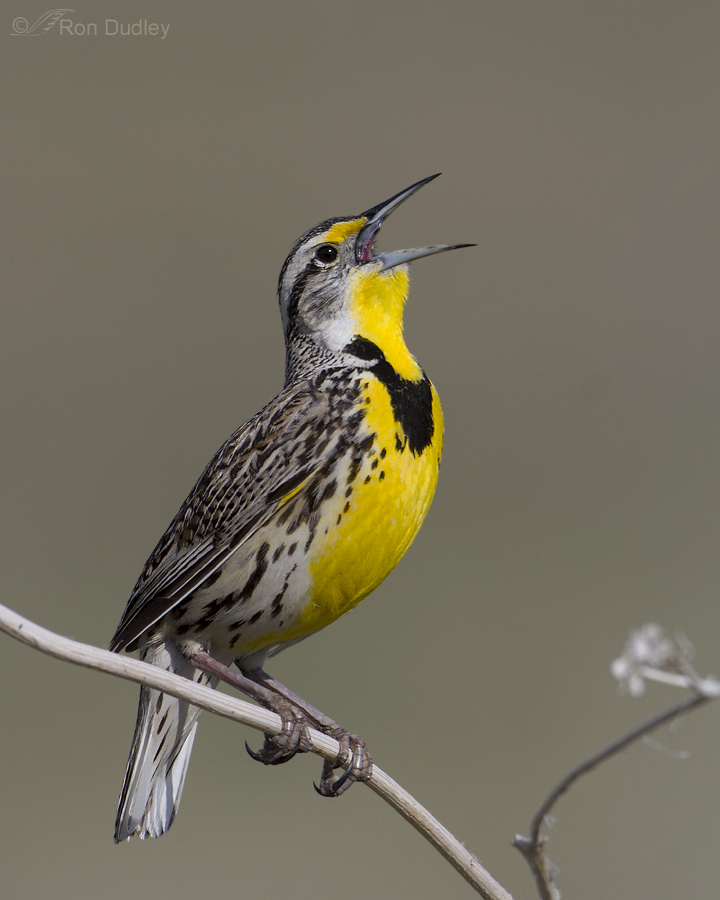 1/2500, f/7.1, ISO 500, 500 f/4, 1.4 tc, natural light
1/2500, f/7.1, ISO 500, 500 f/4, 1.4 tc, natural light
Another common natural perch on the island that can give a clear view of the bird is all the old sunflower stems from previous years. Even though the sunflowers are annuals, the dead stems often stay standing for several years and are heavily used as perches by meadowlarks, shrikes and even Burrowing Owls.
I seldom do any cloning on any of my images but must admit that I was tempted to vanquish the out-of-focus stem at the lower right. In the end I resisted the temptation because it feels dishonest to clone (even if I disclose it) and because I thought the image would look too clean (sterile) , almost like a set-up shot which I detest.
I’m heading to the island again this morning. Looking forward to seeing (and hearing) Minerva again…
Ron


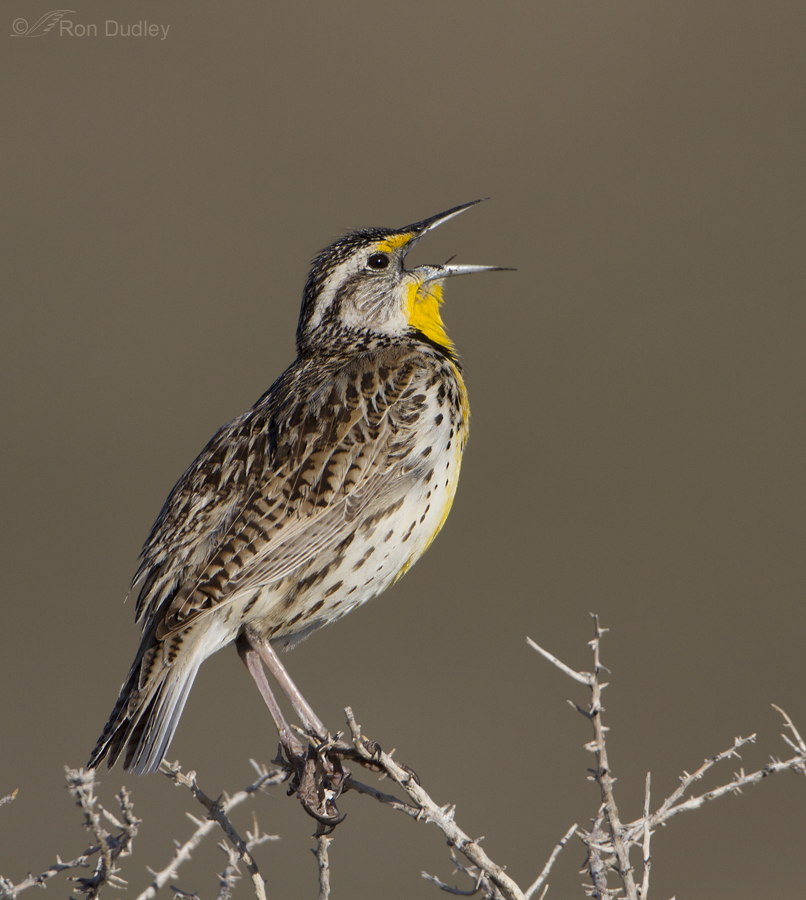
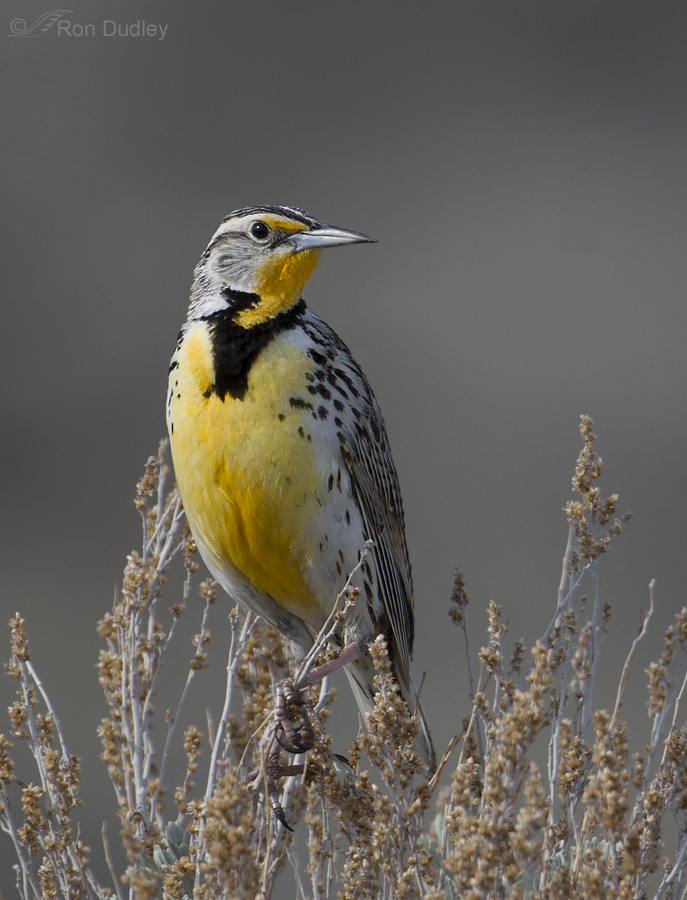
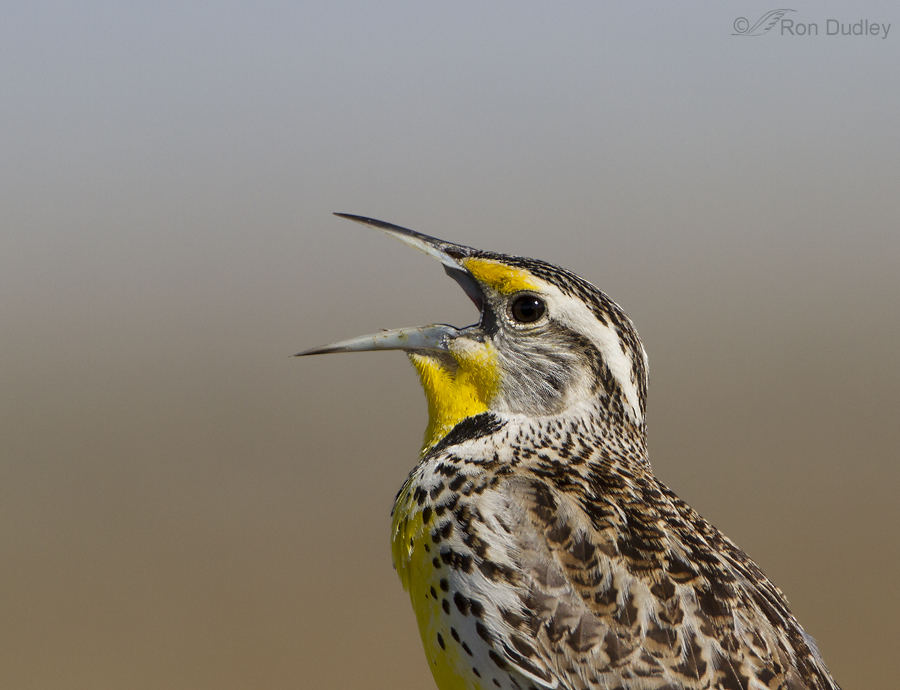
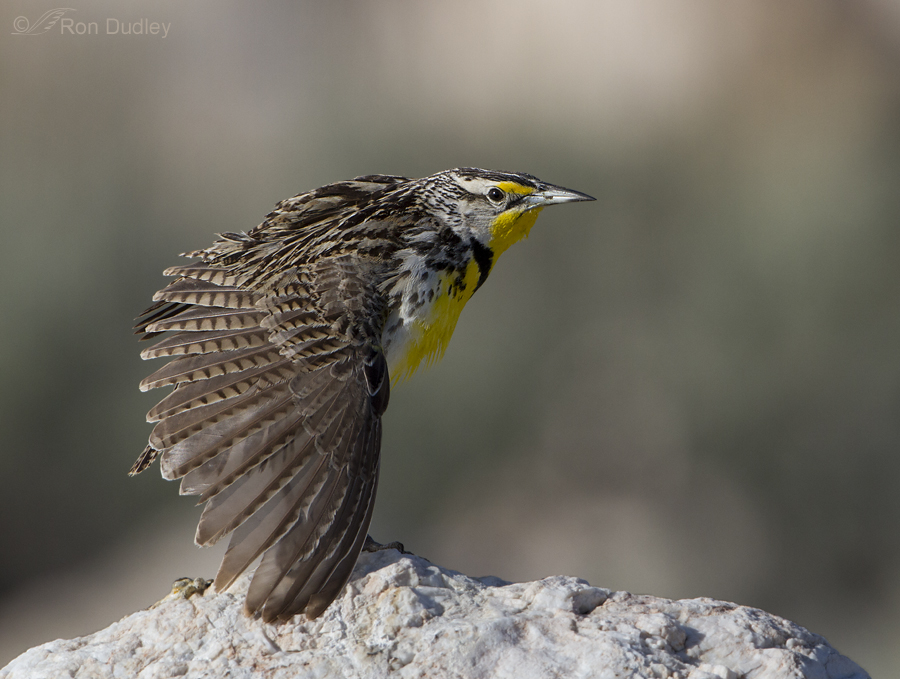
I must have missed these shots first time around! Absolutely great shots, clear, concise, excellent. It is now on my bucket list to come out and see this place!!
Lovely sirens of spring!
Wonderful shots!
Any day which includes singing Meadowlarks is a good day! Any day you share your superb images of the singing Meadowlarks with the world is an even better day!
Thank you, Ron!
“Any day which includes singing Meadowlarks is a good day!”
So true, Wally. So true…
These are the most beautiful pictures of Meodow Larks that I have ever seen, they are positively joyful. When I googled Tintc Quartzite for a description, there was Feathered Photography and I was hooked for well over an hour just lost in your brillant photography from 2012.
Yes, Janice – I’ve made several posts where I’ve mentioned Tintic Quartzite. It’s the predominant rock on the northern third of the island and so very different from the Farmington Canyon Complex rocks on the rest of the island.
These are absolutely gorgeous. They make me want to see meadowlarks in person.
Visit the island one day, Susan. You’ll see (and hear) meadowlarks galore!
Thanks for choosing to leave in the “out of focus” branch. What I like about your blog is that we get to see what you saw. If someone offers you big bucks for that photo to use as a Meadowlark wall portrait, THEN you might clone out the branch.
Well, I guess I’ll wait for the “big bucks” offer and then cross that bridge, Dwynn…
These are oh so fine. I love then all. I’m glad you resisted temptation and didn’t clone out the out-of-focus branch in the last one–not for ethical reasons, but because I like it in the image.
One more vote for non-cloning. This feedback is nice to get. Thanks, Sharon.
OH MY! What gorgeous shots! Thanks so much for sharing them!
Charlotte
Thank you, Charlotte
Ron, leaving the out of focus branch makes the sharp image of the bird (with the light in its eye) real.
Much of life is “out of focus” in some way…
Thanks for your discernment
I’m glad you agree with my decision, Diana. Thanks.